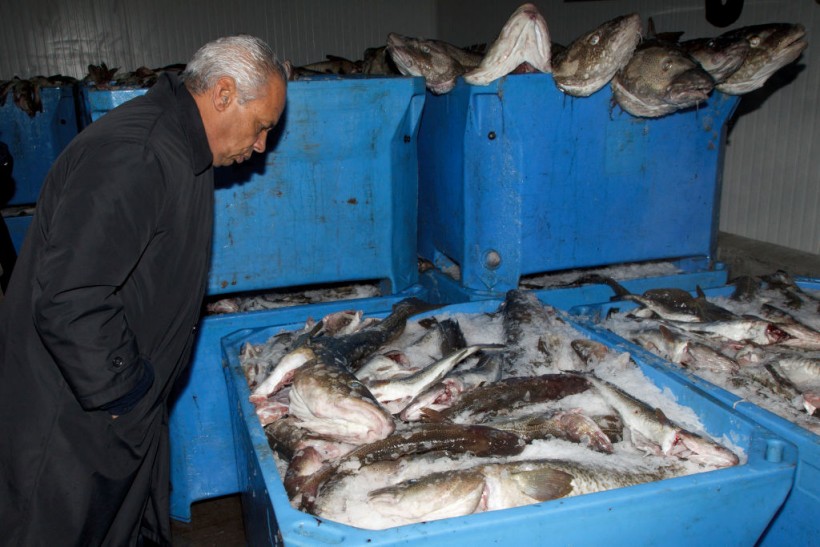Scientists who participated in the international MOSAiC expedition were surprised to find fish and squid in deep water in the Central Arctic Ocean (CAO). Researchers from Stockholm University, the Alfred Wegener Institute, and the European Fisheries Inventory in the Central Arctic Ocean (EFICA) Consortium reported their discovery in their new study.
The dataset collected by the EFICA Consortium only showed a small population of zooplankton and fish in the 600-1900 feet (200-600 meter) deep Atlantic water layer of the Amundsen Basin along the 1,969-mile (3,170-kilometer) long track of the MOSAiC expedition. That is why it was a big surprise to catch four larger fish 1,148-1,312 feet (350-400) meters of depth, and Atlantic armhook squid further north.

Victorin Lurel, minister for Overseas France, inspects cod on February 8, 2013 in Saint-Pierre, Saint-Pierre et Miquelon, a self-governing territorial overseas collectivity of France, situated in the northwestern Atlantic Ocean near Canada, as he starts a two day visit to the archipelago to discuss economic development.
Availability of Larger Fish in Atlantic May Explain Presence of Animals in the North Pole
According to SciTech Daily, the discovery adds a new trophic level to the pelagic food web in the area's ecosystem. Continuous immigration of larger fish and the "deep scattering layer" (DSL) contributes to the potential food sources of mammals that live in the Arctic waters.
Biologist Dr. Hauke Flores from Alfred Wegener Institute said that the availability of small and larger fish in the Atlantic water layer could explain the presence of seals, walrus, and polar bears in the North Pole.
Moreover, researchers also found that diet vertical migration of the DSL is not present at night time in the North Pole, which is characterized by up to half a year of darkness, and at the polar day, that may also last held a year of continuous light. This suggests that carbon flux from shallow and deep waters is hampered in the CAO compared to other oceans.
Pauline Snoeijs Leijonmalm said in the video that light regulates this process even when sea ice disappears since DSL will remain in the deeper part of the Atlantic water layer the whole day.
No Commercial Fishing Allowed in the Next 16 Years
Scientists said that there are no harvestable fish stocks at least in the Eurasian Basin today or in the future. Leijonmalm noted that CAO has very low nutrient concentrations and very low biological productivity. For now, it is important to protect this fragile but functional ecosystem similar to Antarctica.
Science Daily reported that most of the area is international waters that are outside national jurisdictions, which could attract future human activities. Leijonmalm said that exploitation of newly accessible natural resources usually precedes scientific research and management that might harm the ecosystem and lead to overexploitation.
As a precautionary approach, several countries signed the Agreement to Prevent Unregulated High Seas Fisheries in the Central Arctic Ocean (CAO) that was enforced on June 25, 2021. Meanwhile, 10 partners of the Agreement will also launch a large Joint Scientific Research and Monitoring Program to collect specimens and study the ecosystem of the area.
Scientists hope that this agreement will prevent commercial fishing for at least 16 years or more and put scientific research first to assess the status and distribution of possible fish stocks in the CAO.
RELATED ARTICLE: Fisherman From Alaska Suspects Magistrate Squid Preys on Fish Due to Declining Population of King Salmon
Check out more news and information on Marine Biology in Science Times.














